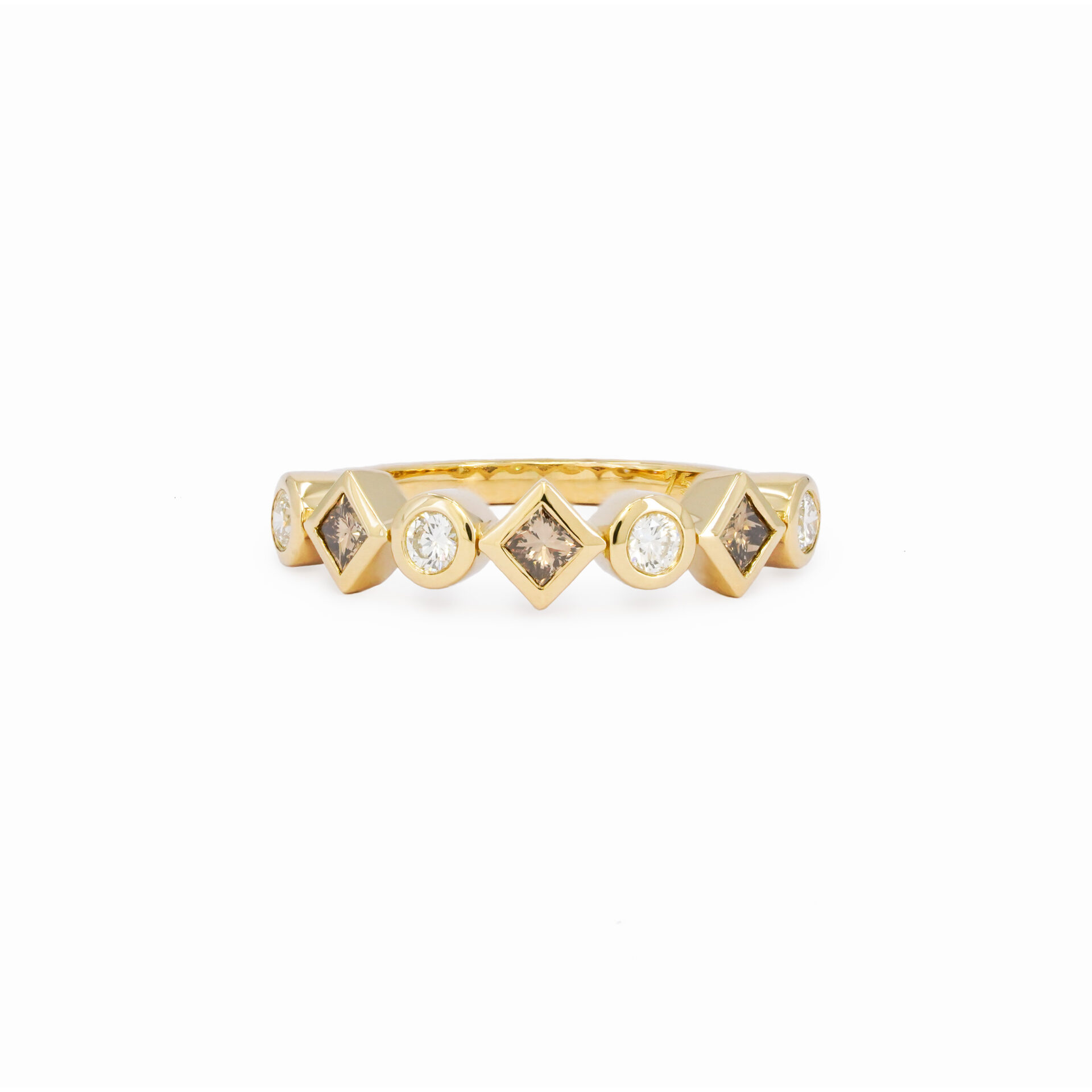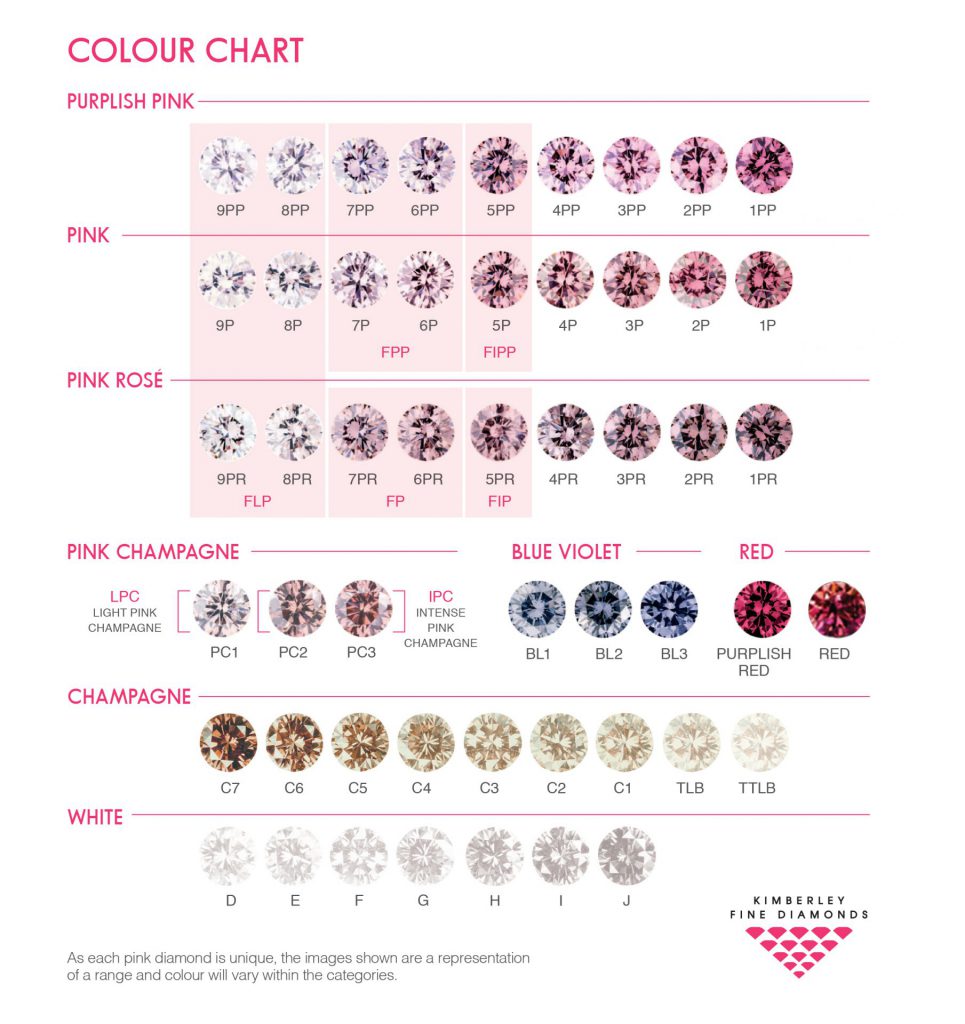Kimberley Fine Diamonds is one of Australia's leading suppliers of the world's rarest diamonds, the stunning Argyle Pink Diamond. An appointed Argyle Pink Diamond Select Atelier ™, Kimberley Fine Diamonds’ collection of exquisite pinks and their array of other natural coloured diamonds unearthed in Western Australia's far north-east is quite simply unmatched.
Established in 1991 by outback pioneer Frauke Bolten-Boshammer, Kimberley Fine Diamonds is celebrated for its bold and daring handcrafted fine jewellery designs. As Australia's most remote diamond house, it is dedicated to crafting jewellery that reflects the vast colours and contrasts of the outback wilderness that is the Kimberley.
Kimberley Fine Diamonds prides itself on quality, using superior local products - including Argyle Diamonds, Australian gold and Broome pearls in its breathtaking designs.
With a full jewellery workshop on site, master jewellers, designers and gemmologists, Kimberley Fine Diamonds offers a full stable of highly qualified and creative staff to bring customers designs to life.
Kimberley Fine Diamonds takes an intimate approach to ensure customer satisfaction, working with clients throughout the jewellery design process, from the selection of precious stones, to the design and creation of the piece, ensuring clients receive an entirely unique, exquisitely finished product.
Regarded as a cosmopolitan oasis in the Australian north west outback, Kimberley Fine Diamonds invites lovers of quality jewellery to visit its boutique retail store in Kununurra or browse its extensive handcrafted collections online.

History of Diamonds
The Kimberley region of Western Australia’s idyllic far north has been an abundant source of diamonds since the 1980s.
Western Australia is known internationally for its production of the world’s rarest coloured diamonds and has become the primary source of exquisite pink diamonds coveted by renowned designers of the finest handcrafted jewellery.
Every diamond has a story that started billions of years ago to produce a solid form of pure carbon, making them not only the hardest known natural material on Earth but also the perfect expression of the power and beauty of eternal love.
The earliest diamonds were discovered in India around the 4th century BC and were valued for their brilliance and ability to refract light.
The use of rings as a symbol of commitment has its origins in Roman times and engagement rings were first recorded in the early 13th century when Pope Innocent III declared a waiting period between a betrothal and a marriage ceremony.
Diamonds were still a rarity outside of royal collections and the aristocracy in the late 19th century, but the discovery of new deposits saw global production increase, with Australia now one of the world’s biggest suppliers of fine diamonds.
Their high refractivity, lustre and superior hardness ensures a brilliant, finished stone with a high polish that still makes them the most sought-after jewel in the world.
An exceptional cut and unrivalled designs from Kimberley Fine Diamonds’ master jewellers enhances each diamond’s unique characteristics to create a timeless and elegant piece that will last a lifetime.

The Four Cs
Cut, Clarity, Colour and Carat
How a diamond sparkles and the intensity with which it reflects and refracts light comes down to the delicate quality of its angles. The cut is one of the most important aspects to consider when choosing a diamond because it will bring out its true fire and scintillation.
Sometimes confused with the diamond’s shape (such as round, emerald, princess, radiant or cushion) the final cut and polish can vary significantly depending on the cutter. The actual shape is important too, however this really does come down to personal preference. It is how that shape is cut that matters more.
Master cutters take hours to study and analyse a diamond to ensure each facet is polished to perfect symmetry and proportion to capture its lustre and brilliance. The entire process can take several days.
In the wrong hands, even the most highly graded diamonds can be left looking dull and bland.
It is why, of all the Four C’s to consider when choosing your diamond, the cut has the greatest impact on its beauty and elegance.
Diamonds were formed billions of years ago under extreme heat and pressure deep within the Earth, leaving almost all with tiny ‘birthmarks’ known as inclusions. It is these imperfections that give each diamond its unique character because these flaws interact with light as it passes through the stone.
The clarity of a diamond is determined by The Gemological Institute of America’s (GIA) 11-point Clarity Grading Scale which is the industry standard around the globe and takes into account the number, size, colour, reflectivity and position of every inclusion, which can include tiny white points, dark dots or fine cracks.
The colour of the diamond you choose is a matter of personal preference and there is a wide range to consider: from warm white to varying shades of yellow. True colourless diamonds are very rare and very valuable – the less colour, the higher the value.
Each is graded using the GIA colour scale from D (colourless, high value) to Z (light colour, lower value) and can affect the price dramatically. Most diamonds fall somewhere between D and J (near colourless).
Interestingly the GIA colour scale does not use the letters A, B and C as these letters were included in an older and more inconsistent grading scale which was used before the official GIA colour scale was introduced. The creators of the GIA colour scale wanted to start fresh and avoid any confusion or association to earlier systems.
Natural fancy coloured diamonds are the exception to the colour scale and range from deep yellows, pinks, greens to blues and are extremely coveted. The more intense and vibrant their shade, the higher their value. Interestingly champagne diamonds have also become more popular since their production from the Argyle mine with nine colours in the range: the lightest and darkest being higher in value.

Carat is the standard unit of measurement to weigh diamonds. One carat equals one-fifth of a gram.
The price of a diamond can rise exponentially as the carat size increases, however size does not necessarily enhance the value of a diamond, particularly if it is badly cut. The cut, colour and clarity also determine a diamond’s value.
Carat is sometimes the first thing people look to when choosing a diamond, but it shouldn’t be the only measure of a perfect stone as there are many important elements that play a part – the 4 C’s and the desire and eye of the beholder.
